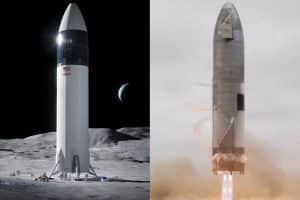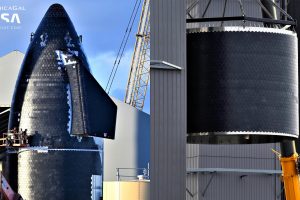The SpaceX and T-Mobile alliance will be life-saving during hurricanes, fires, and other natural disasters. SpaceX Founder, Elon Musk, and T-Mobile CEO, Mike Sievert, announced the new alliance which will end mobile dead zones by launching a new mobile service enabled by Starlink’s second-generation satellites and T-Mobile’s bandwidth.
During tonight’s press conference, Elon Musk said that this new service was meant to provide basic coverage to areas that are currently completely dead. When asked by KRGV’s Cristian von Preysing about the winter freeze, hurricanes, and flooding disasters, both CEOs answered. Mike Sievert emphasized that one of the top priorities of the industry which is a big benefit of this new service is redundancy.
“One of the things about starting next year with messaging as opposed to trying to plunge right in with voice and data right away is that with messaging we should be able to handle a lot of messages. Many, many thousands of messages can be sent. So when you do have outages that happen through natural disasters or otherwise, there’s an opportunity for people at scale to be connected in real-time.
“And Elon was saying, there could be a lag at first but he’s talking about before we reach commercial service. So eventually, as we hit commercial service and even in beta, this is a real-time message where you send a message, and you get an answer. You’re connected.”
He added that by starting out with just messaging, allows T-Mobile to address use cases such as cellular networks being vulnerable to the weather.
Elon Musk added,
“This really is a big deal. Great question to ask because even if an entire region or country lost connectivity because of a severe hurricane or floods or fires or tornadoes, earthquakes there’s so many natural disasters.”
“Even if all the cell towers were taken out your phone would still work.”
This is a game changer for areas that are constantly impacted by disasters such as my own.
During my interview with Elon Musk, I told him about what happened to me and many others during the aftermath of hurricane Ida. The storm knocked out not only all eight Entergy transmission lines in New Orleans but communications as well. I was without power for a week and was one of the lucky ones.
Only people with Verizon were sometimes able to send a text. I have T-Mobile and I was unable to text my friends out of state and tell them that I was okay. Being cut off from communications like that made me feel entirely disconnected from the rest of the world–forgotten, even. And that’s a daunting feeling.
This was on my mind during my interview with Elon Musk. Earlier this summer, Elon Musk invited me down to Giga Texas to interview him on my gem and mineral podcast during the end-of-quarter push.
“When we had Ida, my power was out for a week. When the hurricane hit, the communications and southeast Louisiana were completely wiped out. We were using–I forgot the name of the app but Cajun Navy uses this app to rescue people. They’d go from place to place to place. It just kind of made me think of that–Starlink.”
“Starlink would definitely help organizations like the Cajun Navy as well as others just to be able to communicate better, especially with the government [agencies, I meant to say]. And not just in my area but in other areas, too.”
“It would be cool to see something like that on a more–installed on your phone to keep people connected.”
Elon told me that a phone is able to act like a short-range walkie-talkie but that SpaceX could create a WiFi bridge.
“Certainly one’s phone is capable of behaving at least as a short-range walkie-talkie even if it’s not connected to the internet in any way. We could basically create a WiFi bridge. Is that what you’re talking about?”
“Just something to keep people connected during the disasters you don’t have to worry about a friend is missing and they can call and say ‘hey I’m okay power’s out we’re conserving battery,” I told him.
Tonight’s news will do exactly this.





